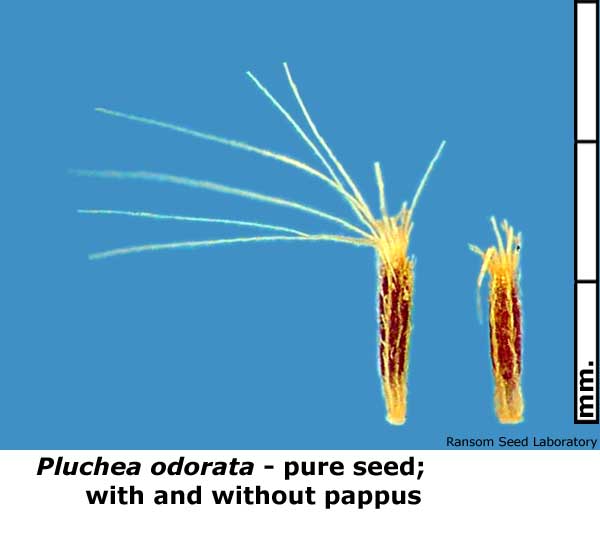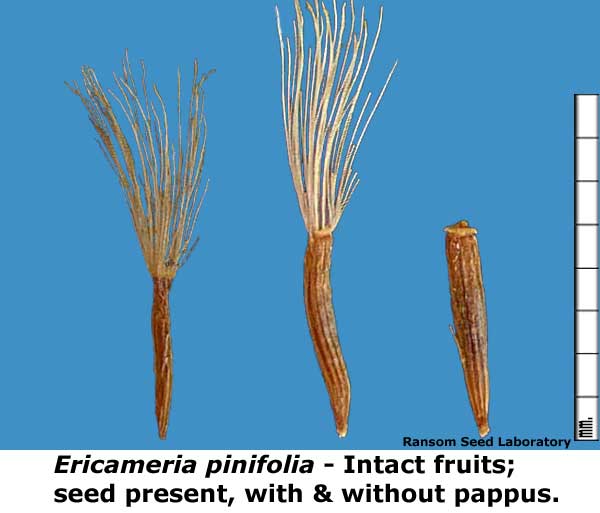Wyethia mollis A. Gray
Mules ears
Family: Asteraceae
Habit: Shrub, slightly woody at the base; stems 4 to 10 dm. high, densely tomentose and resin-dotted, with large yellow flowers.
Distribution: Dry wooded slopes and rocky openings on montane coniferous slopes of the Sierra Nevada, southeastern Oregon and western Nevada.
Seed unit: Achene.
Seed: Achenes 9 to 11 mm. long, tomentose, with short pappus scales. Ray achenes three-angled; disk achenes compressed, four-angled.
Embryo: Foliar with well developed cotyledons.
Purity instructions: Pure seed definition:
AOSA: PSU# 28 - Intact achene with or without pappus, whether or not a seed is present.
ISTA: PSD #4 – Achene, with or without pappus, unless it is obvious that no seed is present.
Lab notes: Samples often have a high percentage of dormant seed; in addition to prechilling, TZ is useful in determining the viability of ungerminated seed.
Average pure seed units per gram: 51 seeds per gram (based on AOSA pure seed units only from 5 samples received for testing from 2000 to 2005).
Range of percent pure seed: 46 to 98%
Range of percent inert: 1% to 53%
Description of inert: Plant material, broken seed.
Planting instructions: 400 seeds, T, 21 days @ 20°C; for fresh and dormant seed, prechill recommended.
References: (link to main reference page)
Hickman, J.C., Ed. 1993. p. 359.
Munz, P.A. and D.D. Keck. 1968. p. 1085.
Ransom Seed Laboratory
































